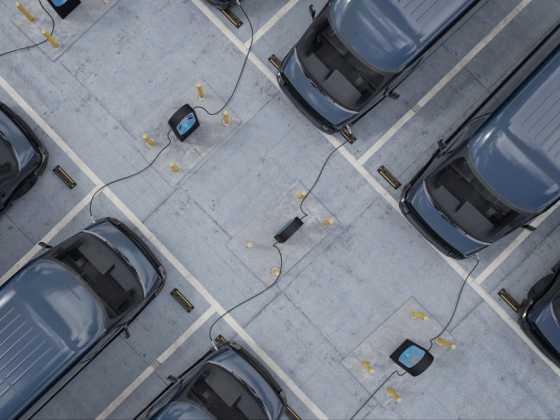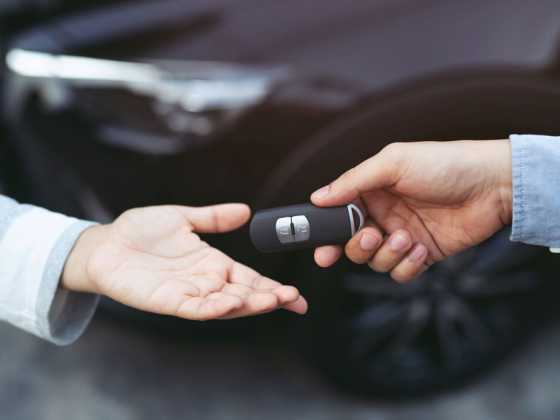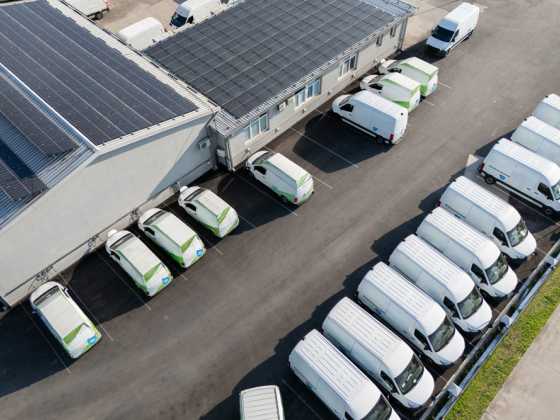Electric savings for Cornwall cab firm
Michelle Williams of Cornwall cab firm C&C Taxis talks about the benefits she has seen from introducing six electric vehicles into her fleet
 Owner Michelle Williams shares the company’s experience of electric vehicles and future plans
Owner Michelle Williams shares the company’s experience of electric vehicles and future plans
Family-run cab firm C&C Taxis in St Austell, Cornwall, was the first taxi and private hire company in the county to adopt a pure electric vehicle, adding the first Nissan Leaf to its fleet of ten vehicles June 2013. This proved to be an operational success, which led the company to buy a further five. The firm has saved about £25,000 on diesel, with the Leaf costing around 2p-per-mile to run.
What made you decide to purchase an electric vehicle?
Living in such a rural area, next the world famous Eden Project, and wanting to reduce our carbon footprint as well as reducing fuel costs, my husband and business partner Mark Williams happened to pick up a magazine about electric vehicles and the rest is history. We bought a first generation Nissan Leaf to check the viability of using it for taxiing, and now own six Nissan Leafs.
After your initial Leaf, what barriers had to be overcome before adding more EVs to the fleet?
After buying our first Leaf it became apparent that the 3.3kW onboard charger wasn’t quick enough for the duty cycle of a taxi. We then ordered a second generation UK built Leaf with an onboard charger capable of 6.6kW. This was far better but for intensive use it was obvious that the Leafs would only be viable with a DC rapid charger. In November 2013 we installed our first rapic charger (RC) which allowed us to purchase more Leafs. With six Leafs, in September 2014 we installed our second RC for future expansion.
Describe a typical day of one of your electric taxis
In the daytime all of the EVs are rapid charged. The charging of the cars is dictated by the length of jobs and how busy they are through the day. Some drivers drip feed their cars through the day between jobs and others run the cars nearly flat and take a good full charge on their lunch break.
How did the drivers initially react to the EVs and what are their views now?
Drivers had mixed emotions when driving the electric vehicles at first. I think the range anxiety was a big thing until they got used to the cars. All drivers now choose to drive an electric car over a diesel. The usual comments from the drivers are that they don’t feel tired after a shift in an EV like they did in a diesel. This is really good news for fleet operators.
How much money on fuel have you saved?
To date we have saved about £25,000 on diesel and reduced our carbon footprint massively. We now estimate we use 80-85 per cent less diesel than we did 18 months ago.
Have you measured how much carbon you are saving?
We have tried to calculate how many carbon emissions we have saved with online calculators, with varying results. We have clocked up 270,000 miles in our EVs which has replaced diesels with an average mpg of 30mpg.
What are your future plans?
We have been asked by Nissan to be part of their ambassador programme to trial an e-NV200 combi. After our trial we will be purchasing our own e-NV200. It’s just a shame it only does a five seater version at the moment. It will be used the same as the Leaf but it has more space which is handy for airport runs.
What advice would you give to other companies thinking of adding EVs to its fleet?
It depends on the nature of their business. Intensive-use, all day long, such as taxis, requires rapid charging. Less intensive use (plumber, florist, electrician) with a different type of business would rely more on the range of the vehicle and it may be possible to only use Type 2 slower charging.






